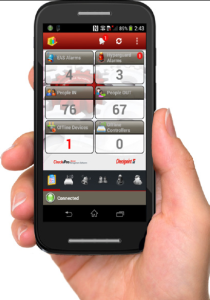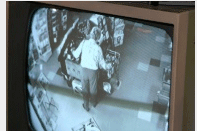 In the past when managers discussed employee theft they mostly talked about the tangibles. They talked about their problems with staff stealing product, supplies and money – the physical things which can be touched and seen.
In the past when managers discussed employee theft they mostly talked about the tangibles. They talked about their problems with staff stealing product, supplies and money – the physical things which can be touched and seen.
They would also discuss the problem of employees “standing around” and not doing their work. However, this conversation was separate from the one about theft, it was about productivity. But, with the arrival of smart phones the issue of productivity can’t be separated from the one of theft. The theft of time, via lack of productivity, is increasing at a rapid rate.
It’s seldom looked at that way because time is an intangible, it lacks physical substance. Its boundaries are blurrier – an employee who would never think of stealing a shirt from the store has no qualms about using company time to buy, on her phone, a shirt from her favorite website.
The idea of who “owns” an employee’s time is an old argument. There have been countless lawsuits and court decisions made over the years, trying to define it. In the last few years there have been several landmark ones in the tech field. On paper it can seem cut and dried, in practice it’s not.
Especially now, when managers are encountering issues they’ve never had to deal with before. The debate of where, how and when people on the job should have access to their phones is a new one, one with strong opinions and feelings on both sides. Companies are struggling with it and most have yet to agree on, develop and enforce clear guidelines.
At this time the issue is simple. A company pays an employee for a block of time, and during that time they have the right to expect (within the labor laws) the worker to give his attention to the duties of the job, not his phone. The business can enact and enforce policies that support this right.
Soon however, it’s going to become much more complicated. Most of us know someone who’s too attached to their phone – a person who is losing or has lost the ability function without it. Individuals who may need professional help to address their obsession (there’s a fierce argument in the medical community as to whether it’s an addiction or not).
In the next few years companies will have to link their phone/workplace access policies with their ADA and Mental Health policies. Therefore, it’s vital that companies develop and enforce basic phone/workplace access policies and procedures now, because it’s only going to get more complicated. Don’t let employees steal your company’s time; after all you paid for it.
Nicole Abbott is a professional writer who’s had over 150 articles published. She’s a business consultant and former psycho-therapist with over 20 years of experience in mental health, business and addiction. She’s a coach, lecturer, trainer and facilitator. She has conducted over 200 workshops, trainings, presentations, seminars and college classes.


 Burnout is an on-going, serious issue in the retail industry. The industry is so immense and pervasive that all of us, even if we’ve never working in retail, have knowledge of and experience with the problem.
Burnout is an on-going, serious issue in the retail industry. The industry is so immense and pervasive that all of us, even if we’ve never working in retail, have knowledge of and experience with the problem. The cost of cyber security for retailers seems to double year after year. The cost of a data breach in this country in 2014 cost the retailer an average of
The cost of cyber security for retailers seems to double year after year. The cost of a data breach in this country in 2014 cost the retailer an average of I don’t care about solving social problems. I don’t care about saving the world (okay maybe I really do). But I cannot fix many of these things myself. I cannot make shoplifters change their evil trade for real work. But I can make shoplifters go somewhere else and leave my customers alone.
I don’t care about solving social problems. I don’t care about saving the world (okay maybe I really do). But I cannot fix many of these things myself. I cannot make shoplifters change their evil trade for real work. But I can make shoplifters go somewhere else and leave my customers alone.  Over the past five years or so, social media platforms have exploded. Sites like Facebook, Twitter, or Instagram are essentially a one stop shop for all your news, entertainment and whatever your Aunt Dolly is doing today… Like most Americans, I visit these websites frequently throughout the day (although, I am weaning myself off this addiction slowly, but surely). Businesses have also been quick to jump on the bandwagon and have found that direct to consumer marketing, especially the free kind of marketing, can really help a small business soar. With so many people, places and things interconnected, you can see how the Loss Prevention Industry uses these platforms to not only aid in investigations, but to help track down fencing operations, retail ORC groups and even dishonest employees.
Over the past five years or so, social media platforms have exploded. Sites like Facebook, Twitter, or Instagram are essentially a one stop shop for all your news, entertainment and whatever your Aunt Dolly is doing today… Like most Americans, I visit these websites frequently throughout the day (although, I am weaning myself off this addiction slowly, but surely). Businesses have also been quick to jump on the bandwagon and have found that direct to consumer marketing, especially the free kind of marketing, can really help a small business soar. With so many people, places and things interconnected, you can see how the Loss Prevention Industry uses these platforms to not only aid in investigations, but to help track down fencing operations, retail ORC groups and even dishonest employees. Ever notice how so many different shoplifters, from various backgrounds and demographics all share similar characteristics in the manner in which they steal, the product that they steal and the methods used to conduct their acts? Well, I did and it really got me thinking. Why was this so? Is there some large underground shoplifting network where this information is swapped amongst the thieving brethren? Kind of.
Ever notice how so many different shoplifters, from various backgrounds and demographics all share similar characteristics in the manner in which they steal, the product that they steal and the methods used to conduct their acts? Well, I did and it really got me thinking. Why was this so? Is there some large underground shoplifting network where this information is swapped amongst the thieving brethren? Kind of. What is the most important factor to consider when you make a shoplifting apprehension?
What is the most important factor to consider when you make a shoplifting apprehension?